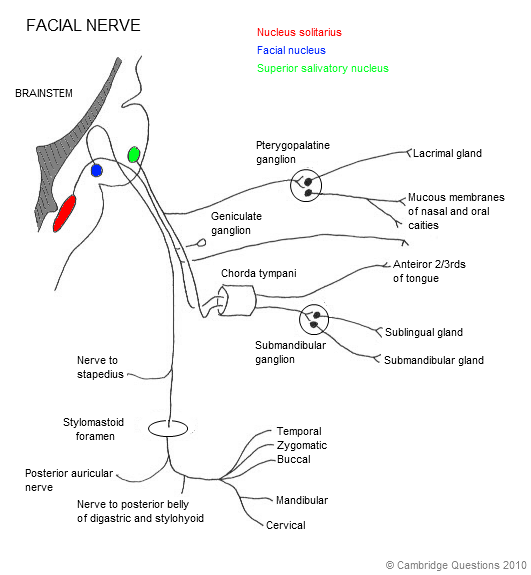Question #243
The facial nerve
The facial nerve is the seventh cranial nerve. It consists of a lateral sensory and parasympathetic root (nervus intermedius) and a medial motor root. It enters the internal auditory meatus and passes through the facial canal of the petrous temporal bone to exit at the stylomastoid foramen. From here it passes deep to the parotid gland. It has several different branches arising along its course:
- Greater petrosal nerve – forms in the facial canal and carries pre-ganglionic parasympathetic fibres to the pterygopalatine ganglion and special taste sensation to the upper mouth.
- Chorda tympani – forms on the posterior wall of the tympanic cavity and carries special taste sensation to the anterior 2/3rds of the tongue and pre-ganglionic parasympathetic fibres to the submandibular ganglion.
- Nerve to stapedius – also forms on the posterior wall of the tympanic cavity. This carries fibres from the superior olivary nucleus which controls reflex contraction of stapedius in response to loud noise.
- Nerves to posterior belly of digastric, stylohyoid and occipitalis emerge as the facial nerve exits the stylomastoid foramen
-
The remaining facial nerve divides into upper and lower divisions which pass from the retromandibular to the superficial parotid gland. The divisions further divide to give the five peripheral branches supplying the muscles of facial expression:
- Temporal
- Zygomatic
- Buccal
- Mandibular
- Cervical
- Remember: Two Zulus Buggered My Cat
